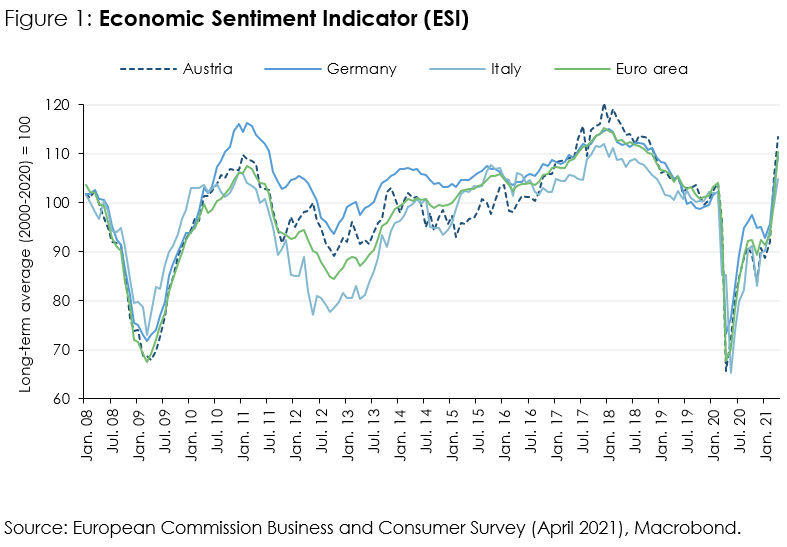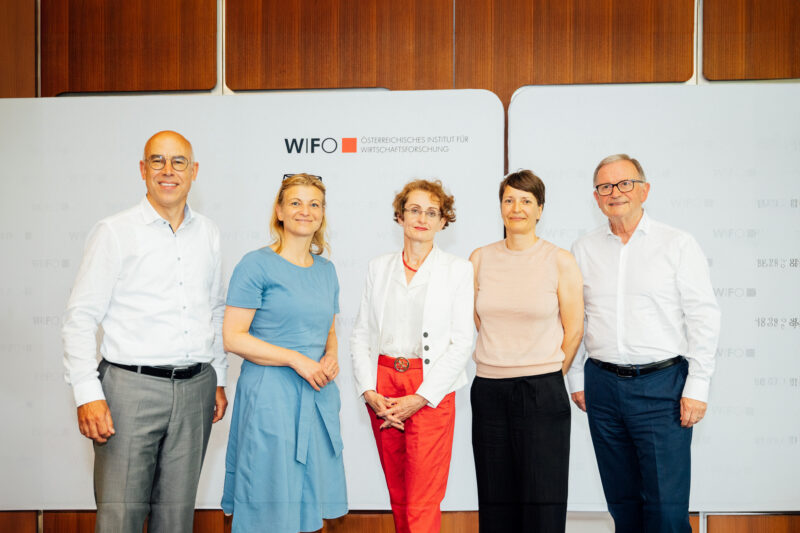
Economic Prospects Improve
The recovery in business and consumer confidence observed since the beginning of the year gained significant momentum in April. Sentiment brightened across the board, although it remained more subdued in consumption-related sectors than in manufacturing," says Sandra Bilek-Steindl, author of the latest WIFO Business Cycle Report.
The recovery of the global economy continued at the beginning of 2021, starting from China and other emerging Asian economies, although the momentum weakened slightly in February. With the global recovery, raw material prices also rose again: year-on-year, the increase from the long-term low of April 2020 was 116 percent (euro basis); compared with March 2021, growth lost momentum.
While in the USA the effects of fiscal policy measures supported the economy (+1.6 percent quarter-on-quarter), GDP in the euro area declined by 0.6 percent in the first quarter. In Germany, where containment measures were tightened at the end of 2020, the decrease was 1.7 percent. Restrictions in the retail and service sectors weighed on private consumption.
However, leading indicators also suggest an improvement in the economic situation for the Euro area. The Economic Sentiment Indicator (ESI) published by the European Commission was above the long-term average for many EU countries in April for the first time since the outbreak of the COVID-19 pandemic. In addition to industry, there were also signs of a recovery in the services sector.
In Austria, too, companies were noticeably more optimistic about the economic situation than before: according to the WIFO-Konjunkturtest (monthly business cycle survey) of April, economic assessments improved significantly in all sectors surveyed. However, the incipient global upswing led to bottlenecks in intermediate products, which companies in the manufacturing sector cited as the most important obstacle to production. This could represent an uncertainty for the further course of the economy.
Positive impetus from the construction and industrial sectors already supported the domestic economy in the first quarter; GDP increased by 0.2 percent compared with the previous quarter. In the consumer-related service sectors, however, value added declined again
Since the outbreak of the COVID-19 pandemic, commodity prices had dampened domestic inflation. This effect reversed in March 2021.
On the labour market, there are increasing signs of a recovery. According to preliminary estimates, the number of employed persons was again slightly higher in April than in the previous month, while unemployment declined (–4.6 percent compared with March). The seasonally adjusted unemployment rate according to the national definition is likely to have been 8.4 percent in April.

Publications
Please contact
























